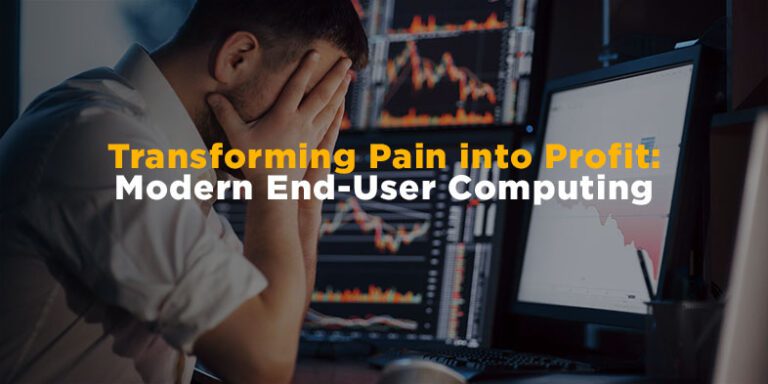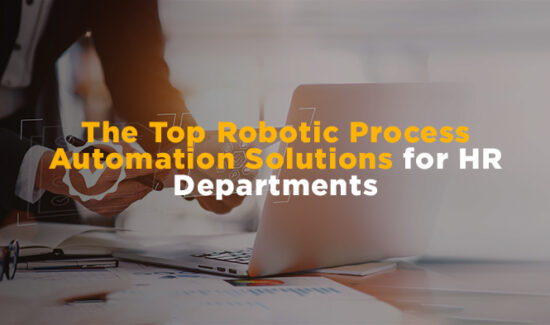Transforming Pain into Profit: Modern End-User Computing


As part of Solutions Review’s Contributed Content Series—a collection of contributed articles written by our enterprise tech thought leader community—Amitabh Sinha, the CEO of Workspot, explains how modern end-user computing (EUC) can help companies improve profits.
 In the era of end-user computing, the terms ‘next-gen’ and ‘revolutionary’ are commonly used to refer to the shift away from outdated legacy Virtual Desktop Infrastructure (VDI) systems to a modern, cloud-first approach that combines on-premises and cloud environments. End-user computing (EUC) has historically been a costly IT expense, but this hybrid multi-cloud approach is a cost-effective performance booster. Contemporary solutions and strategies, including cloud-first VDI implementation, enable these systems to vastly simplify the construction, operation, and management of EUC environments and revolutionize end-user computing.
In the era of end-user computing, the terms ‘next-gen’ and ‘revolutionary’ are commonly used to refer to the shift away from outdated legacy Virtual Desktop Infrastructure (VDI) systems to a modern, cloud-first approach that combines on-premises and cloud environments. End-user computing (EUC) has historically been a costly IT expense, but this hybrid multi-cloud approach is a cost-effective performance booster. Contemporary solutions and strategies, including cloud-first VDI implementation, enable these systems to vastly simplify the construction, operation, and management of EUC environments and revolutionize end-user computing.
IT leaders often face significant challenges when adopting a hybrid multi-cloud strategy, primarily due to the intricate nature of managing different private and public clouds. These complexities are further exacerbated by ongoing issues stemming from legacy VDI systems. In order to turn this source of frustration into a source of proficiency and profit, CIOs and IT leaders must look to modernize their approach.
Conventional Approaches Pose Additional Obstacles
VDI stands out as an effective solution for enhancing cybersecurity and catering to the needs of a geographically dispersed and versatile workforce. Nevertheless, the difficulties linked with implementing on-site VDI have become increasingly evident. These include uncertainties regarding vendors, over-extended IT resources, reduced end-user efficiency, constraints on business flexibility, and escalating expenses. Businesses persisting with the use of on-site VDI systems may face serious operational and financial consequences.
Expanding on-premises VDI can be extremely time-consuming. This process can extend over several months or even years, consuming valuable time of both end-users and IT teams and impeding business agility. Users can encounter daily frustrations and productivity setbacks due to poor VDI system performance. Remote users, for instance, might suffer from latency issues that traditional on-premises solutions fail to resolve. Other users might experience disruptions following infrastructure or operating system updates.
Sustaining these systems can burden the IT department significantly, entailing substantial expenses for maintenance and operation. The costs will contribute to a misalignment of IT efforts; this includes not only direct expenses but also hidden costs that accumulate over time, such as downtime and diminished productivity. To bring enterprises into the future with the utmost agility, CIOs and IT leaders must look to modernize infrastructure with cloud-first VDI systems.
Cloud-First Approach: Shifting from an Expense to a Source of Profit
Global end-user expenditure on public cloud services is projected to reach almost $600 billion in 2023, as was previously predicted by Gartner. This forecast shows a 20.7 percent growth from the total global spending in 2022. As this space grows and adoption increases, it is key for organizations to determine the best approach suited to their specific needs. IT leaders must carefully strategize and plan the adoption of an end-user computing solution to transform traditional IT expenses into cost optimization opportunities that provide even greater security, end-user productivity, and flexibility benefits.
End-user computing solutions, such as cloud-first VDI systems, can provide 24×7 end-user observability, broadly deploy in weeks, scale up or down in minutes, enable continuous reliability, and analyze real-time data sets to provide leaders with insights into key performance metrics.
Uninterrupted observability
Organizations should deploy cutting-edge end-user computing solutions with 24×7 observability to guarantee uninterrupted IT operations. Comprehensive tools like round-the-clock monitoring, real-time incident alerts, performance analysis, and in-product user feedback enable effective and efficient management by IT teams to ensure consistency, high performance, and reliability.
Efficient scaling and deployment
Deployment and scalability must adhere to the constantly shifting business requirements. There may be cases where the organization needs to hire remote software engineers for a new project, integrate a new acquisition, or hire contractors to finalize a mission-critical finance project. The VDI must be quickly deployable and capable of scaling up or down efficiently.
Continuous reliability
Downtime can result in major financial losses; for many large enterprises, a single day of downtime can result in a million dollars in lost productivity per one thousand users. For some large financial services, a single hour of downtime can result in up to one million dollars in lost productivity per individual user. The “reliability” of end-user computing technology must be top of mind when strategizing to adopt modern solutions.
IT leaders must consider solutions with capabilities specifically designed to reduce productivity loss. This will bolster disaster recovery strategies and enhance overall performance reliability. Technologies with the ability to replicate a primary desktop into a secondary region when a primary region is unavailable is key. This allows users to get back up and running quickly and efficiently, even if the organization is experiencing disruption. Reduced downtown means a reduced profit loss from a lack of productivity.
Analytics and intelligence
Adopting end-user solutions that can collect comprehensive user data is extremely beneficial for CIOs and IT leaders. Technologies that enable the collection and real-time analysis of large datasets from gateways, endpoints, virtual desktop agents, and multiple cloud platforms provide IT teams with critical performance data. This allows the team to uncover insights around network conditions and CPU/memory usage, which also enables real-time, swift issue resolution across multiple regions and clouds. This leads to higher end-user satisfaction, downtime minimization, and increased cost savings.
When integrating modern end-user computing solutions, IT leaders should also consider cloud-native architectures, which drastically reduce the amount of time needed to achieve value. For example, they can enable organizations to begin a pilot in just one day and move to full-scale production in as little as 45 days. Organizations should also look for solutions that lower the total cost of ownership (TCO) since this may result in significant cost savings.
End-User Computing: The Future
The adoption of modern VDI signifies more than just a technical advancement in today’s cloud-focused environment. It serves as a strategic business step enabling CIOs and IT leaders to transform conventional IT expenses into profitable opportunities for fostering company growth and efficiency.
By adopting a new approach to end-user computing, businesses can shift from outdated legacy VDI to modern VDI systems. This transition empowers them to streamline costs, improve security, and enhance performance within their IT infrastructure, leading to improved end-user experiences, reduced downtimes, increased productivity, and overall business growth.
























